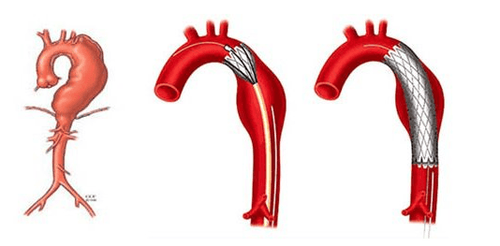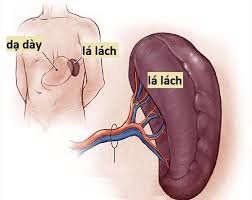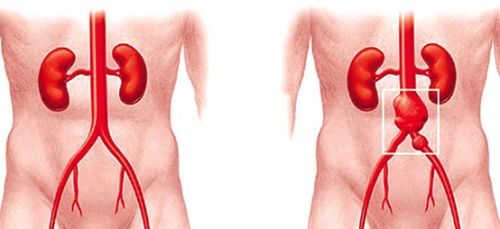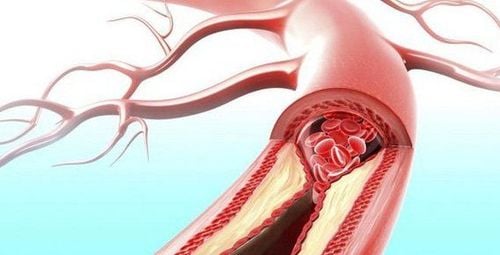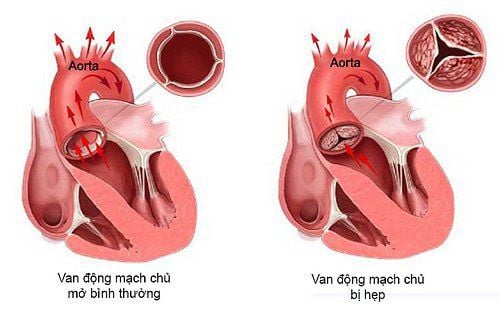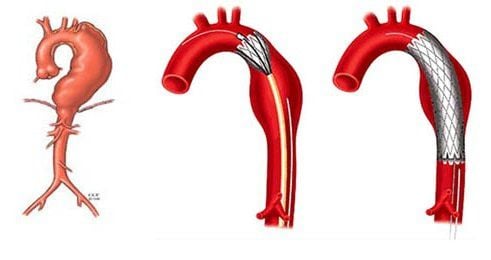This is an automatically translated article.
The subrenal abdominal aorta is a major branch of the aorta that begins inferiorly to the renal artery. Abdominal aortic bulging, stenosis, or occlusion are abnormalities involving the abdominal aortic intima that affect blood flow and flow rate. The result of these conditions is a lack of blood supply to areas and organs in the abdomen, pelvis, and lower extremities. Laparoscopic surgery to treat bulging, occlusion, and narrowing of the lower abdominal aorta is a preferred method of choice in many cases.1. Overview of bulging, narrowing, and occlusion of the abdominal aorta below the kidney
The abdominal aorta is considered as the great artery of the human body because of its size and largest blood flow. The abdominal aorta and its branches carry oxygen-rich blood directly from the left heart to most of the body's organs. The path of the aorta extends from the chest after leaving the left ventricle to the abdomen just below the navel and divides into two left and right iliac arteries.
In each region, the aorta has its own names including ascending aorta, aortic arch, thoracic aorta which corresponds to the aorta above the thorax and abdominal aorta which is the name of the aorta. aortic segment in the abdomen. The subrenal abdominal aorta is the term referring to the segment of the aorta from below the renal artery branching to just above the site of the abdominal aorta branching into the iliac artery. The abdominal aorta below the kidney is responsible for carrying blood to the abdominal organs excluding the kidneys and inside the pelvis.
Subrenal abdominal aortic aneurysm is an increase in the size of the aortic lumen, also known as aortic aneurysm or aortic dilatation. The cause of this condition is usually due to a weakened segment of the vessel wall gradually becoming dilated under great intravascular pressure. Aneurysm of the abdominal aorta below the kidney is one of the life-threatening diseases if it causes rupture complications. At that time, intra-abdominal bleeding will take place massively, causing the patient to fall into acute hemorrhagic shock and multi-organ failure.
Abdominal aortic stenosis or aortic occlusion are other pathological disorders that may present in the subrenal aorta. Aortic stenosis or occlusion may be the primary manifestation of local abnormalities or the result of a variety of conditions, including aortic aneurysm. Aortic stenosis can be congenital, present at an early age. Atherosclerosis is a common cause of aortic stenosis in the elderly, obese, and smokers. Atherosclerotic plaques form and gradually narrow the aorta. When plaques become unstable and rupture, they travel through the bloodstream to other smaller blood vessels, causing narrowing or blockage.
Inferior renal aortic stenosis can also be caused by vasospasm. The gradual progression of subrenal aortic stenosis can lead to aortic occlusion. This is a serious medical condition, causing acute ischemia to the vital organs in the abdomen and lower extremities, requiring urgent intervention. The patient has to face severe pain, if not treated promptly, may require amputation.

Phồng động mạch chủ bụng dưới thận là một trong những bệnh lý nguy hiểm đến tính mạng nếu gây ra biến chứng vỡ
2. Laparoscopic surgery to treat bulging, occlusion, and stenosis of the lower abdominal aorta
Abdominal aortic aneurysm can be monitored without intervention if the size of the bulge is small. However, a safe measure for the patient is to intervene to repair the bulge bag. In the past, surgical repair of the abdominal aortic aneurysm was the mainstay method. The patient has to undergo a major surgery, suffers a large incision on the abdomen with many different risks, the most frightening is a bleeding accident.
Today, along with the development of science and technology, many alternative artificial means have been born, bringing many benefits to patients with abdominal aortic aneurysm because they come with less invasive treatments. encroachment and safer. Laparoscopic surgery for abdominal aortic aneurysm is a minimally invasive surgery by placing stents inside the artery lumen. The surgeon will proceed to use catheters, which are long and small tubes inserted in the lumen of the peripheral blood vessels, to access the abnormal segment of the aorta. The skin incision is only very small, usually in the thigh area compared to the previous surgical repair method.
Intravascular stents will be inserted after the doctor locates the aortic aneurysm under the magnifying screen. The stent of choice is made from a variety of materials such as metal or fabric. The main effect of stents is to enhance the stability of the abdominal aorta with aneurysms and prevent later complications of abdominal aortic aneurysm rupture.
For stenosis and occlusion of the abdominal aorta, laparoscopic surgery is performed in the same way as in the case of abdominal aortic aneurysm. An endovascular catheter is inserted into the narrowed and blocked artery to recirculate the intraluminal blood in a variety of ways, such as stenting or removing plaque or blood clots.
Laparoscopic surgery for bulging, occlusion, and narrowing of the lower abdominal aorta has many outstanding advantages such as:
Less invasive Scars of old surgery, ensuring aesthetics Short hospital stay, recovery time Fast Suitable even for elderly patients

Mổ nội soi điều trị phồng, tắc, hẹp động mạch chủ bụng dưới thận phù hợp với cả những bệnh nhân lớn tuổi
Vinmec International General Hospital with a system of modern facilities, medical equipment and a team of experts and doctors with many years of experience in medical examination and treatment, patients can rest assured to visit examination and treatment at the Hospital.
Please dial HOTLINE for more information or register for an appointment HERE. Download MyVinmec app to make appointments faster and to manage your bookings easily.
SEE MOREComplications and risk of rupture of abdominal aortic aneurysm: Aortic aneurysm: Causes, symptoms, diagnosis and treatment Vinmec successfully saved the life of patients with a ruptured aortic aneurysm.




